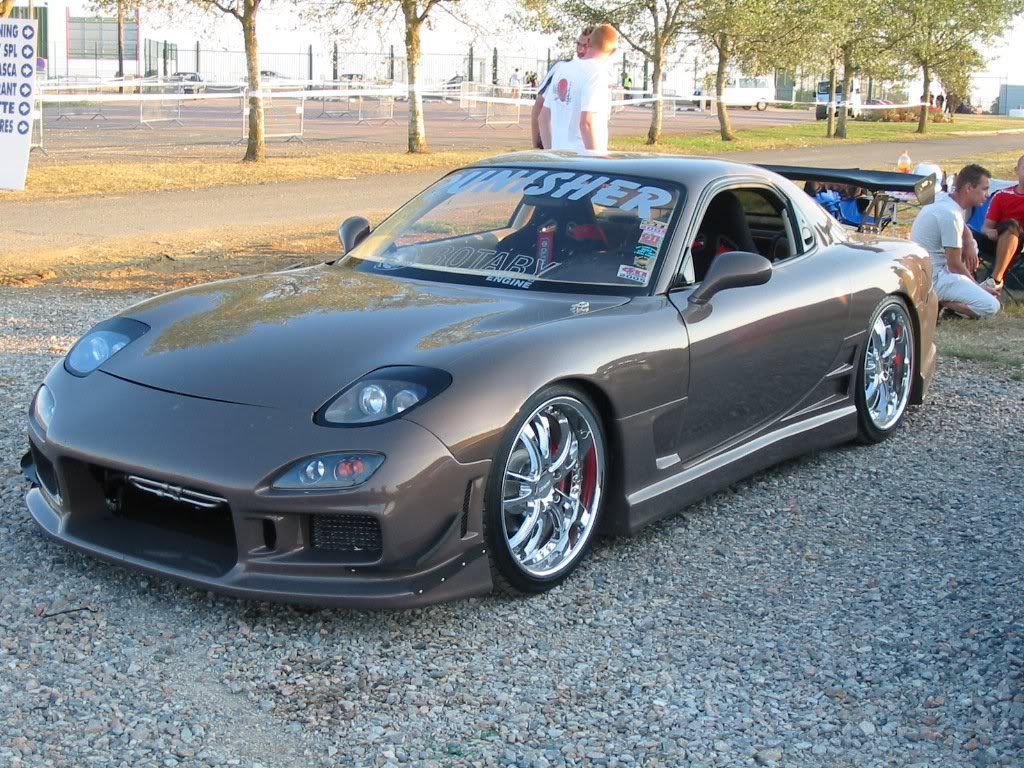The Mazda RX-7 was one of the few classic sports cars to come from Japan. Known for its sleek styling, unique rotary engine and affordable price, the two-door coupe was an instant hit from the moment it was introduced for the 1979 model year.

[ 1995 Mazda RX-7 2 Dr STD Turbo Rotary Coupe ]
`
Mazda's devotion to the Wankel rotary engine is one of the more well-known quirks of the auto industry. Although it is less fuel-efficient than conventional piston engines, the rotary engine has the benefit of being compact and lightweight. These qualities, along with the car's well-tuned chassis and rear-wheel-drive layout, have made the Mazda RX-7 one of the best-handling affordable sports cars ever made.
`
`
Through three generations, Mazda made sure that the RX-7 stayed on the cutting edge of design and performance, completely overhauling the car for each model change. Unfortunately, Mazda probably went too far with the final RX-7. Although it was beautiful to look at, the third generation's overall no-compromise performance concept was too extreme, and the car's high price turned off many potential buyers. Sagging sales forced Mazda to stop importing the RX-7 to the North American market just three years into its product cycle.
1
[2002 Mazda RX7 Spirit R]
Though Mazda is currently producing a rotary-powered successor, the four-seat RX-8, many enthusiasts are still hoping the company will bring out an all-new RX-7. Though rumors have floated about, no official plans have been announced.
Past Mazda RX-7s
Mazda's intentions with the RX-7 were clear from the very first generation. Sold from 1979-'85, the original RX-7 established the car's DNA as a small, light and fun-to-drive sports coupe. Its 100-hp, 1146cc (1.1-liter) Wankel rotary engine wasn't the most impressive power plant on the market. But a rigid chassis, light curb weight and optimum 50/50 weight distribution gave the RX-7 great handling characteristics. A five-speed manual transmission was standard.
[1984 Mazda RX 7]
In Mazda RX7, a well equipped GSL trim was added in 1981, but the first major changes didn't come until the introduction of the GSL-SE trim in 1984. That version replaced the 100-hp engine with a 1.3-liter rotary equipped with fuel injection, producing 135 hp and dropping the coupe's 0-60 time into the high 7s.
Released in 1986, the second-generation Mazda RX-7 was a complete overhaul of the previous model. The 1.3-liter power plant was retained but its output was up to 146 hp. The car had a longer wheelbase and a wider track. And for the first time, it was equipped with an independent rear suspension. Although the car was roughly 150 pounds heavier than the outgoing GSL and had a reputation for being not quite as sharp in terms of handling, it was just as quick. Mazda also offered an optional 2+2 seat layout, but the rear seats were more useful for carrying small cargo than people.
Later that year, Mazda introduced the first RX-7 Turbo, which featured a turbocharged 1.3-liter rotary that made 182 hp. With 0-60-mph time in the low 6-second range, the RX-7 Turbo finally gave the model lineup superior engine performance to go with the car's impressive handling ability.
1
[Totally modified 2003 Rx7 Spirit]
1
Capitalizing on the car's popularity, Mazda also released a convertible two-seater in 1988. It was available exclusively with the non-turbo 146-hp engine and a five-speed manual transmission. A year later, Mazda tweaked the rotary engine and bumped the naturally aspirated models up to 160 hp and the Turbo to 200 hp. The convertible was also given the option of a four-speed automatic. After that, the RX-7 remained relatively unchanged until the launch of the third generation in 1993.
1
[A new light modified RX7]
`


 5:56 AM
5:56 AM
 Admin
Admin




 Posted in:
Posted in: 







